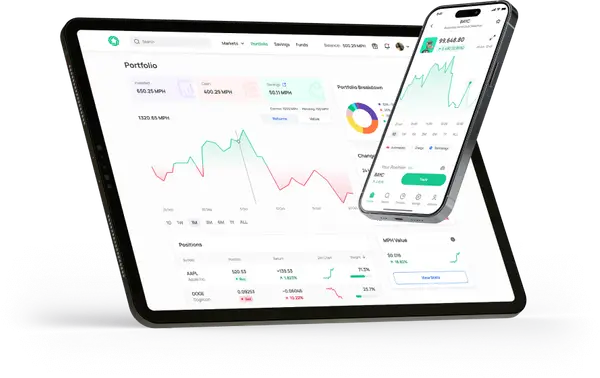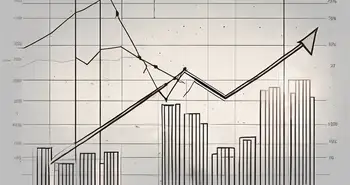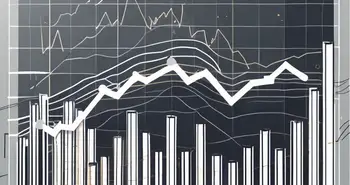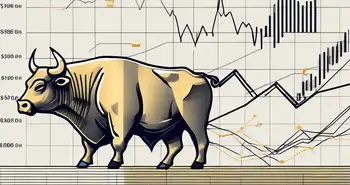The Characteristics of a Perfectly Competitive Market

As an expert in the field of economics, I am excited to share with you the characteristics that define a perfectly competitive market. Grasping the characteristics of perfect competition is a must, as these elements fundamentally shape how buyers and sellers interact and drive market dynamics. Let's explore what makes this market structure so unique and why it plays such a vital role in economic theory and real-world applications.
Understanding Perfect Competition
Perfect competition is a market structure that represents an idealized scenario where numerous buyers and sellers exchange homogeneous products at a price determined solely by market forces. In a perfectly competitive market, there are no barriers to entry or exit, and all market participants have perfect information about prices and product quality.
This type of market structure is often considered the benchmark against which other market structures are compared.
Definition of Perfect Competition
Perfect competition is characterized by a large number of buyers and sellers, each being relatively small in size compared to the overall market. No single buyer or seller has the power to manipulate prices or influence market conditions.

Additionally, products in a perfectly competitive market are identical or homogeneous, meaning there are no differences in product quality or characteristics across different sellers. This feature ensures that buyers have no preference for any particular seller.
Key Features of Perfect Competition
Perfect competition exhibits several key features that set it apart from other market structures. Let's take a closer look at these features:
- Price Taker: In a perfectly competitive market, both buyers and sellers are price takers. This means that they accept the prevailing market price as given and have no influence over it.
- No Barriers to Entry or Exit: The ease with which new firms can enter or exit a market is a defining characteristic of perfect competition. This ensures that markets remain competitive and barriers to competition are minimized.
- Perfect Information: All buyers and sellers in a perfectly competitive market have access to perfect information about prices, quality, and availability of products. This allows for efficient decision-making and prevents any information asymmetry.
- Profit Maximization: Firms in a perfectly competitive market aim to maximize their profits by producing at the quantity where marginal cost equals marginal revenue.
- Efficient Allocation of Resources: Perfect competition promotes an efficient allocation of resources, as firms produce at the lowest average cost and prices reflect the true value of goods and services.
Understanding these key features will provide you with a solid foundation for comprehending the role of buyers and sellers in a perfectly competitive market.
The Role of Buyers and Sellers in a Perfectly Competitive Market
Buyers and sellers are the driving forces behind a perfectly competitive market. Their behavior and decisions shape the equilibrium price and quantity in the market. Let's explore the influence they have in more detail.
Buyer's Influence on Perfect Competition
In a perfectly competitive market, buyers play a critical role in determining the demand for products. The collective demand of buyers interacts with the supply offered by sellers to establish an equilibrium price and quantity.
As price takers, buyers have no capacity to influence the market price. Instead, they make their purchasing decisions based on their individual preferences, needs, and budget constraints. The aggregate demand curve reflects the willingness of buyers to pay at different price levels.
Seller's Influence on Perfect Competition
On the other side of the equation, sellers in a perfectly competitive market determine the supply of products. They strive to optimize their profits by adjusting the quantity supplied based on the prevailing market price.
Since there are no barriers to entry or exit, sellers can freely enter or exit the market to pursue higher profits. This freedom ensures that competition remains fierce and prevents any single seller from monopolizing the market.
The Impact of Product Homogeneity
Product homogeneity plays a crucial role in fueling competition within a perfectly competitive market. Let's explore the concept of product homogeneity and understand how it contributes to a competitive environment.
The Concept of Product Homogeneity
Product homogeneity refers to the uniformity of products offered by different sellers in a market. In a perfectly competitive market, products are indistinguishable, making them perfect substitutes for consumers.
For example, imagine a market where numerous farmers sell identical apples. Buyers have no preference for any particular seller because they perceive the apples to be the same in terms of quality and taste. This ensures that all sellers within the market face the same demand conditions.
How Product Homogeneity Fuels Competition
Product homogeneity intensifies competition among sellers in a perfectly competitive market. Since products are identical, buyers have no reason to pay a higher price for one seller's product over another's.
This forces sellers to constantly strive to offer their products at the lowest possible price. The pursuit of cost efficiency becomes paramount, as any seller charging a higher price risks losing customers to competitors.
The Importance of Perfect Information in Competitive Markets
In a perfectly competitive market, access to perfect information is instrumental in ensuring transparency and efficiency. Let's delve into the significance of perfect information in decision making and market dynamics.
The Role of Information in Decision Making
Buyers and sellers in a perfectly competitive market rely on accurate and timely information to make informed decisions. Perfect information enables buyers to compare prices and make purchasing decisions that align with their budget constraints and preferences.
Similarly, sellers benefit from perfect information about market conditions, enabling them to adjust their production and pricing strategies accordingly. Access to information on input costs, demand fluctuations, and competitor behavior empowers sellers to optimize their profits.
To stay ahead in today’s fast-paced markets, consider using Morpher AI. Morpher AI provides real-time market insights for crypto, stocks, commodities, and more, helping you make better-informed decisions with ease. Sign up now to leverage the power of Morpher AI for free and ensure you’re always equipped with the latest information.

Information Symmetry and Market Efficiency
Perfect competition assumes that all market participants have equal access to perfect information. This creates an information symmetry that leads to market efficiency.
When buyers and sellers possess the same information, market prices accurately reflect supply and demand conditions. This ensures that resources are allocated efficiently and that there is no market manipulation or exploitation.
Freedom of Entry and Exit in Perfect Competition
The freedom of entry and exit is a fundamental feature of perfectly competitive markets. Understanding the dynamics of market entry and exit sheds light on the long-term stability and competitiveness of these markets.
Understanding Market Entry and Exit
In a perfectly competitive market, new firms can enter the market freely if they believe it is profitable. Likewise, existing firms can exit the market if they find it unprofitable.
This freedom ensures that market forces constantly push for maximum efficiency, as firms that fail to adapt to changing market conditions are replaced by those offering better products or lower prices.
The Impact of Free Entry and Exit on Market Dynamics
The freedom of entry and exit promotes competition and ensures that no single firm dominates the market. It allows for a continuous influx of innovative ideas and fosters market responsiveness to changes in consumer preferences and technological advancements.
On the flip side, the threat of potential entry acts as a deterrent against monopolistic behavior. Established firms must constantly strive to improve their products, lower costs, and provide better value to consumers to retain their market share.
Having a deep understanding of these concepts is crucial for both students of economics and anyone interested in gaining insights into how markets operate. The characteristics of a perfectly competitive market shape the behavior of buyers and sellers, determine levels of competition, and contribute to the overall efficiency and welfare of market outcomes.
As an expert in economics, let me leave you with a personal piece of advice. Whether you're a consumer or a business owner, understanding the dynamics of perfectly competitive markets empowers you to make better decisions. Embrace competition, seek out information, and be aware of your choices. This will undoubtedly pave the way for success.
FAQ: Frequently Asked Questions
What is a perfectly competitive market?
A perfectly competitive market is a market structure where numerous buyers and sellers exchange homogeneous products at a price determined solely by market forces. It is characterized by price takers, no barriers to entry or exit, perfect information, profit maximization, and efficient resource allocation.
Why is product homogeneity important in a perfectly competitive market?
Product homogeneity intensifies competition by ensuring that buyers have no preference for any particular seller. This forces sellers to constantly strive to offer their products at the lowest possible price, fueling competition and leading to efficient market outcomes.
How does perfect information benefit competitive markets?
Perfect information ensures transparency and efficiency in competitive markets. It empowers buyers to make informed decisions based on accurate and timely information about prices and product quality. Similarly, sellers benefit from information about market conditions, enabling them to optimize their production and pricing strategies. Information symmetry also leads to market efficiency, as prices accurately reflect supply and demand conditions.
What role does freedom of entry and exit play in perfect competition?
Freedom of entry and exit is a crucial factor in perfectly competitive markets. It promotes competition, innovation, and efficiency by allowing new firms to enter the market and established firms to exit when necessary. This constant flow of firms ensures that market forces drive maximum efficiency and prevent monopolistic behavior.
Remember, the characteristics of a perfectly competitive market provide the foundation for a vibrant and dynamic economic environment. By understanding these features, you gain valuable insights into how markets function and how you can make informed decisions as a consumer or business owner.
Now that you understand the intricacies of a perfectly competitive market, why not experience the future of trading with Morpher? Embrace the innovative platform that embodies the principles of perfect competition with zero fees, infinite liquidity, and the freedom to trade a vast array of assets. Whether you're looking to invest in stocks, cryptocurrencies, or even unique markets like NFTs, Morpher offers you the flexibility and control to maximize your trading strategy. Sign Up and Get Your Free Sign Up Bonus today to start trading on a platform that's as dynamic and efficient as the markets it emulates.

Disclaimer: All investments involve risk, and the past performance of a security, industry, sector, market, financial product, trading strategy, or individual’s trading does not guarantee future results or returns. Investors are fully responsible for any investment decisions they make. Such decisions should be based solely on an evaluation of their financial circumstances, investment objectives, risk tolerance, and liquidity needs. This post does not constitute investment advice.

Painless trading for everyone
Hundreds of markets all in one place - Apple, Bitcoin, Gold, Watches, NFTs, Sneakers and so much more.

Painless trading for everyone
Hundreds of markets all in one place - Apple, Bitcoin, Gold, Watches, NFTs, Sneakers and so much more.









